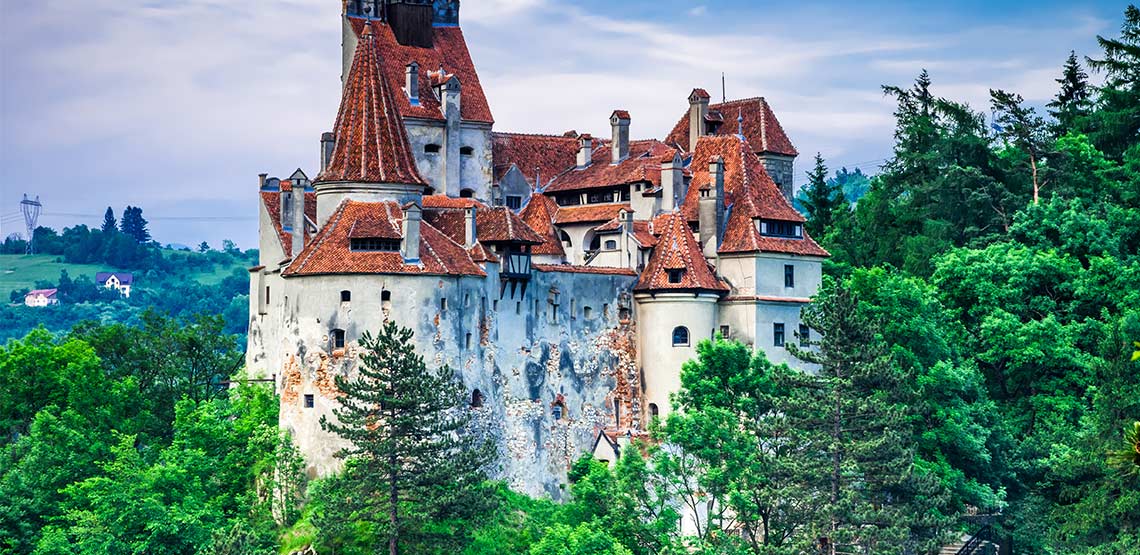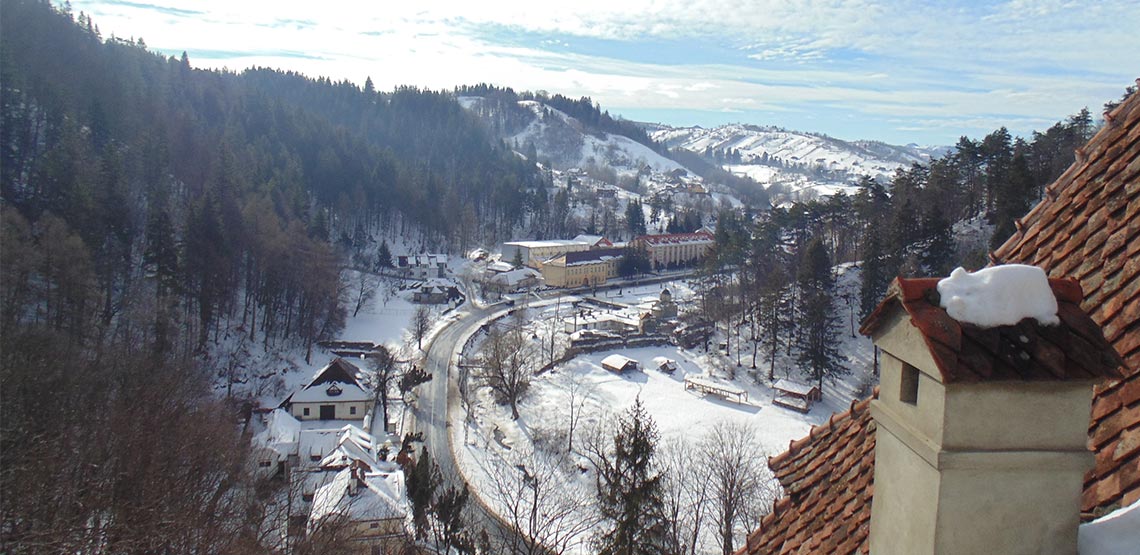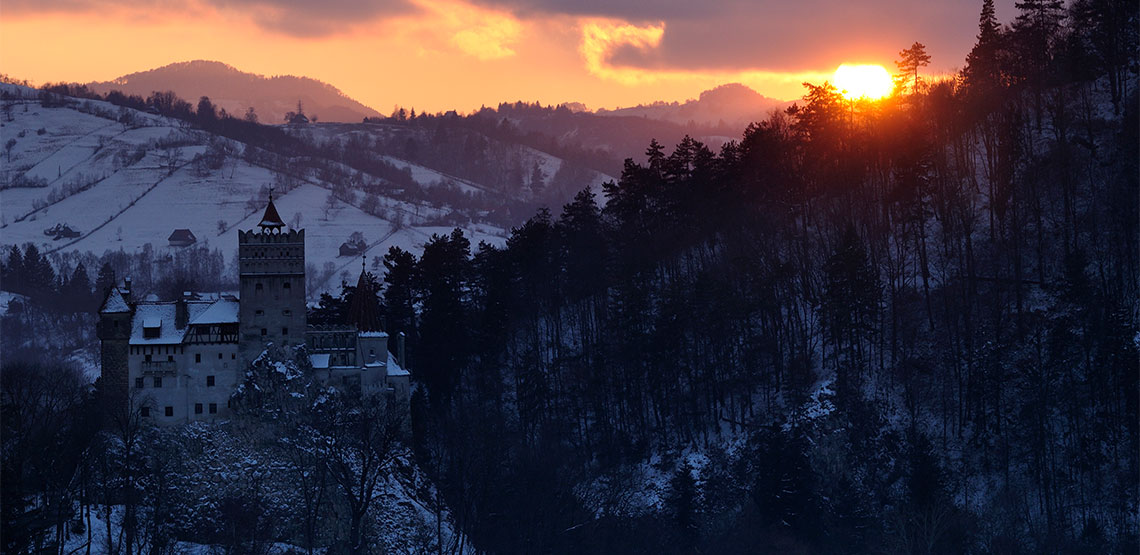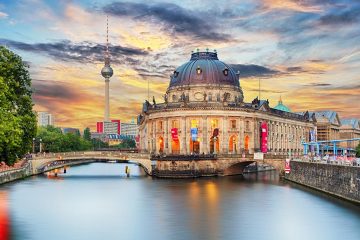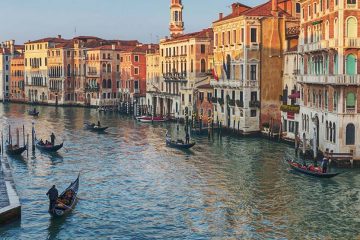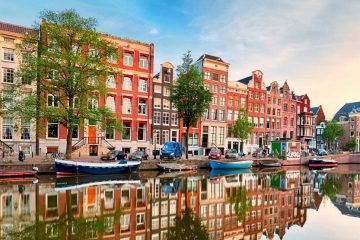Planning Your Visit to Bran Castle — the Perfect Home for a Centuries-Old Vampire
Explore Dracula’s Castle… If You Dare
Steeped in legends and rich history, Bran Castle is one of the most iconic landmarks in Romania. The 14th-century fortress sits atop a rocky cliff, rising out of thick forest to overlook the surrounding vast countryside. While commonly known as Dracula’s Castle, the stone fortress holds many stories beyond that of the legendary vampire.
Here’s what to know about visiting Bran Castle whether you are making a stop while on a European river cruise or while touring Romania on foot.
The History of Bran Castle
In 1211 the Teutonic Knights, a Catholic religious order, built a citadel overlooking the Bran Pass. Over 150 years later, Hungarian King Louis the Great granted the people of Brașov privilege to build a castle in its place; construction was completed in 1388.
Bran Castle — originally built as a fortress — served the role of customs and was used to monitor the trading of goods being transferred in and out of Transylvania. For the next five centuries the castle traded hands frequently as various kings and militaries purchased the rights to the fortress.
In 1920 Bran Castle was gifted to Queen Marie as Transylvania became part of Greater Romania. The castle was restored and became the royal summer residence until 1932. After Queen Marie’s passing, the castle was inherited by Princess Ileana who used it as a hospital from 1944 until 1948.
Bran Castle was then transformed into a museum in the 1950s and remains as such to this day in the possession of its legal heirs. With such a busy history and many restorations, it’s little wonder that the castle appeals to so many tourists.
Dracula’s Castle
Bran castle looks like something from a dark fairy tale with its red tiled roofs on old stone towers peaking over the dense forest. It doesn’t require too much imagination to see why the castle is now so fondly referred to as Dracula’s Castle.
Dracula, Bram Stoker’s character, is a count, nobleman, sorcerer and, more famously, a centuries-old vampire who resides in a castle perched high on a hill in the forests of Transylvania. Although Stoker had never visited Romania, Bran Castle is the only Romanian castle that matches the description of Dracula’s Castle as it is depicted in the novel.
As a result, Bran Castle is known throughout the world as Dracula’s Castle.
Although Bram Stoker’s character is fictitious, Dracula’s name is believed to have been inspired by historical elements. Dracula is often associated with Vlad Tepes — better known as Vlad the Impaler — a Wallachian prince who ruled from 1456 to 1462 and in 1476.
Vlad Tepes is occasionally referred to as Vlad Dracul, “Dracul” being derived from the Crusader Order of the Dragon with which both Vlad and his father had been associated.
Bran Castle was never owned by Vlad the Impaler, however he likely used it during his invasions in Transylvania. The Castle’s connection to Vlad the Impaler has more to do with his mysterious lifestyle and “blood-thirsty” reputation instead of his time spent in the Bran fortress.
A Baja California vacation is sure to sweep you off your feet. Close to the US and full of adventure and relaxation, it's the perfect getaway.
In Modern Times
Dracula’s Castle draws many tourists looking to learn more about Bram Stoker’s classic vampire. While some visitors point out that there is only a thin connection, the castle and surrounding town have fully embraced the honor of being Dracula’s home.
In 2016 the fortress opened its doors to two overnight guests, but only for Halloween night. Thanks to the contest, which was run by Dacre Stoker — the great-grandnephew of Bram Stoker — it was the first time since 1948 that anyone had slept in the castle.
The two guests chosen to experience the once-in-a-lifetime opportunity were provided with dinner, breakfast and two velvet-lined coffins to spend the night in.
The castle hosts several events and festivals throughout the year. Unsurprisingly the most sought-after are the spooky events that take place around Halloween each year, although guests are not permitted to spend the night.
Castle Admission
Bran Castle is located near Brașov, Romania and is open year-round; be prepared for colder weather and possibly snow if you are planning to visit between October and March. The Castle is one of Romania’s top tourist attractions, with more than 630,000 visitors each year, so prepare to deal with some crowds regardless of when you visit.
The museum is spread throughout the castle, including narrow staircases leading to conical towers and old rooms furnished with 19th-century antiques. The castle also hosts a collection of costumes, weapons and armor as part of the museum.
Tour Hours
High Season (April 1 to September 30)
- Monday: 12 p.m. to 6 p.m.
- Tuesday to Sunday: 9 a.m. to 6 p.m.
- Last admission at 6 p.m.
Low Season (October 1 to March 31)
- Monday: 12 p.m. to 4 p.m.
- Tuesday to Sunday: 9 a.m. to 4 p.m.
- Last admission at 4 p.m.
Pricing
- Adults: 40Lei | 8.5€ | $10 USD
- Seniors (65+): 30Lei | 6.5€ | $7.65 USD
- Students: 25Lei | 5.5€ | $6.50 USD

